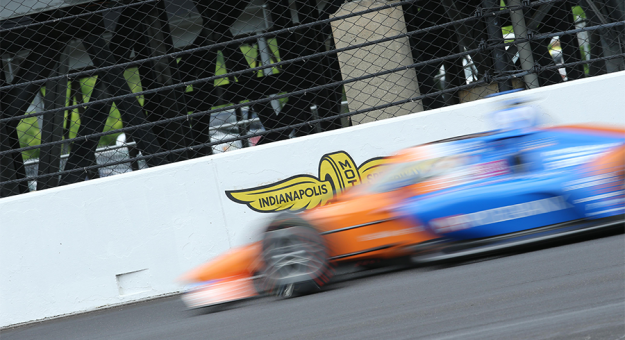This weekend, the NTT IndyCar Series will set the lineup for the 107th Running of the Indianapolis 500.
With 34 entries vying for a spot on the 33-car grid at Indianapolis Motor Speedway on May 28, one driver and team will miss the race.
While the race hasn’t changed over its illustrious history, qualifying has varied over the years.
Have questions about how this year’s field of 33 will be determined? We’ve got the answers:
How It Works
Unlike any other race on the IndyCar schedule, Indy 500 qualifying is based on a driver’s best four-lap average speed.
On the 2.5-mile oval, that’s 10 miles at speeds approaching 230 mph, extracting maximum performance from the driver and the car.
Saturday Qualifications
On Saturday, every driver will get at least one chance to make a four-lap run. Once every driver completes their run, the jockeying begins.
Once every car in the qualifying order for Saturday has been given a chance to qualify, teams may choose from two lanes for subsequent attempts to improve their result.
Cars in the priority lane (lane one), must withdraw their previous qualifying time, but can get back on track ahead of any car in lane two.
Lane two is for cars that have already qualified, but are looking to improve on their previous effort. The initial time is safe, regardless of how their second run goes.
Only positions 1-30 are locked into the field after Saturday’s qualifying session.
The four entries that are not locked into the top 30 after Saturday, will run again Sunday for the final three spots in the starting field.
After the gun shots go off at 6:00pm Eastern Time to signal the end of day one, positions 31-34 will qualify again on Sunday to determine the final three spots.
Saturday’s top 12 qualifiers will run again Sunday to determine the Firestone Fast Six, who will get a crack at the coveted pole position.
Sunday Qualifications
First up on Sunday’s Pole Day docket is top 12 qualifying. In reverse order (slowest to fastest), each driver from the top 12 in Saturday’s qualifying will be guaranteed one run on track.
Once complete, the fastest six drivers in the session advance to the Firestone Fast Six later in the day to determine the front two rows for the Indianapolis 500.
Sandwiched between the 12-car session and the Firestone Fast Six will be last-chance qualifying to fill the three spots in the 11th row on the grid for The Greatest Spectacle in Racing.
Each entry is guaranteed one attempt within the one hour time slot. Several attempts can be made until time expires.
After one entry is sent packing, it’s time to determine the top six.
Going in reverse order from the top 12 session, each driver is guaranteed one attempt on track. After each entry attempts a run, the fastest driver in the Firestone Fast Six will be the polesitter for the Indy 500.
Follow @DHoffmanMedia22